Corsair Force LS (240GB) Review
by Kristian Vättö on September 25, 2013 12:00 AM ESTRandom Read/Write Speed
The four corners of SSD performance are as follows: random read, random write, sequential read and sequential write speed. Random accesses are generally small in size, while sequential accesses tend to be larger and thus we have the four Iometer tests we use in all of our reviews.
Our first test writes 4KB in a completely random pattern over an 8GB space of the drive to simulate the sort of random access that you'd see on an OS drive (even this is more stressful than a normal desktop user would see). I perform three concurrent IOs and run the test for 3 minutes. The results reported are in average MB/s over the entire time. We use both standard pseudo randomly generated data for each write as well as fully random data to show you both the maximum and minimum performance offered by SandForce based drives in these tests. The average performance of SF drives will likely be somewhere in between the two values for each drive you see in the graphs. For an understanding of why this matters, read our original SandForce article.
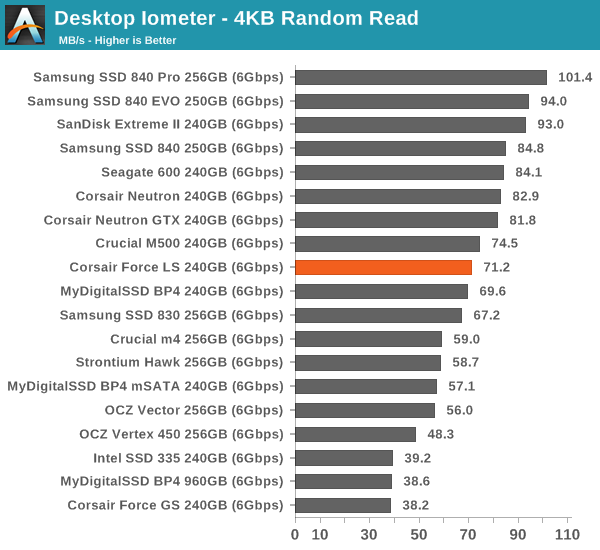
It looks like random read performance has received some improvements in the latest firmware, making the Force LS 14MB/s faster than MyDigitalSSD's BP4.

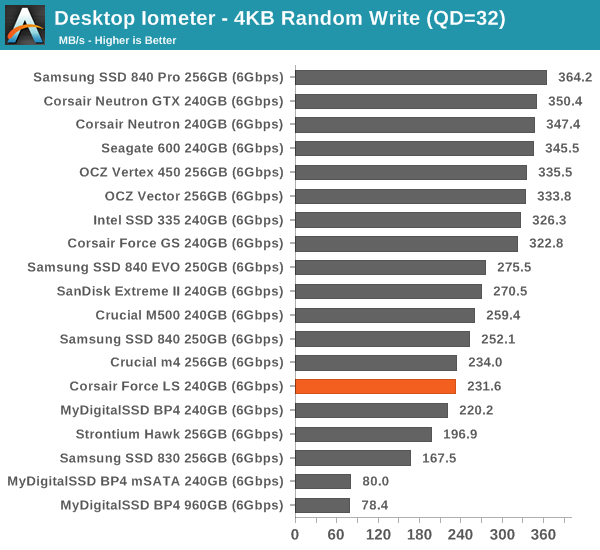
Random write performance is also marginally better than BP4's but overall it's Phison's biggest issue. Dealing with random writes has always been the toughest job for manufacturers, especially if you're aiming to make a budget SSD. It's good to see some improvement on this front but Phison must step up their game if they're looking to play in the high-end series.
Sequential Read/Write Speed
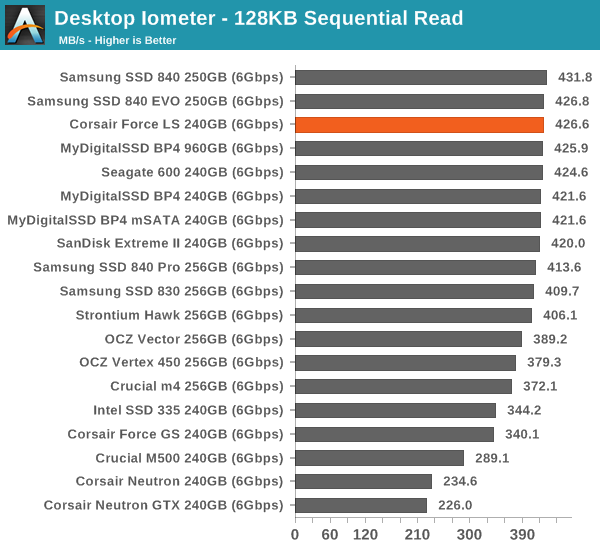
Sequential transfers are much easier to deal with and that we can see in the results. Read performance is top-of-the-class and write performance is not far behind the fastest models.
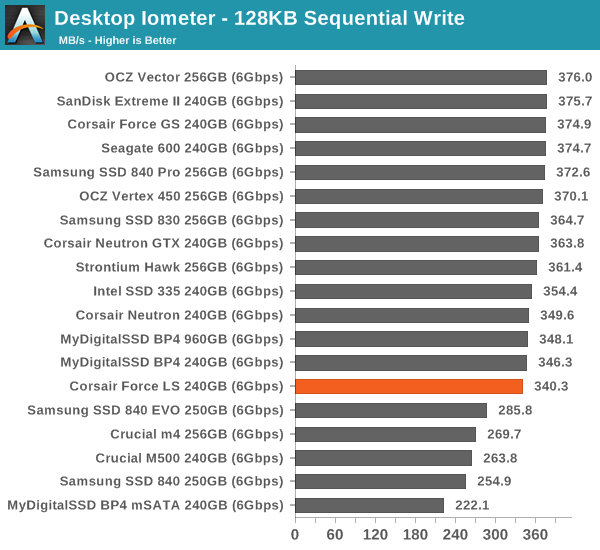
AS-SSD Incompressible Sequential Read/Write Performance
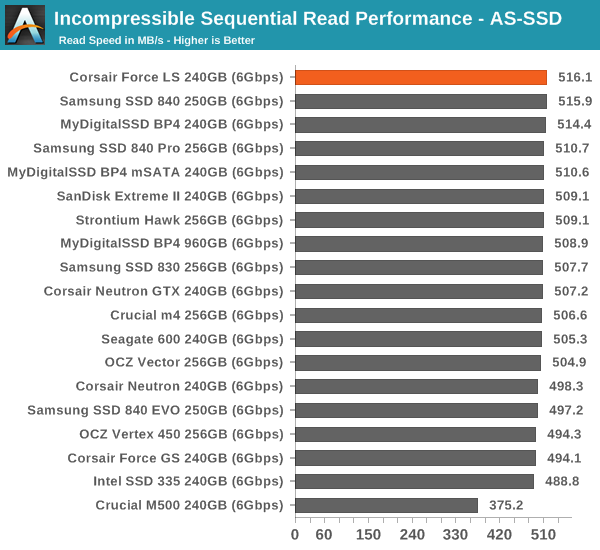
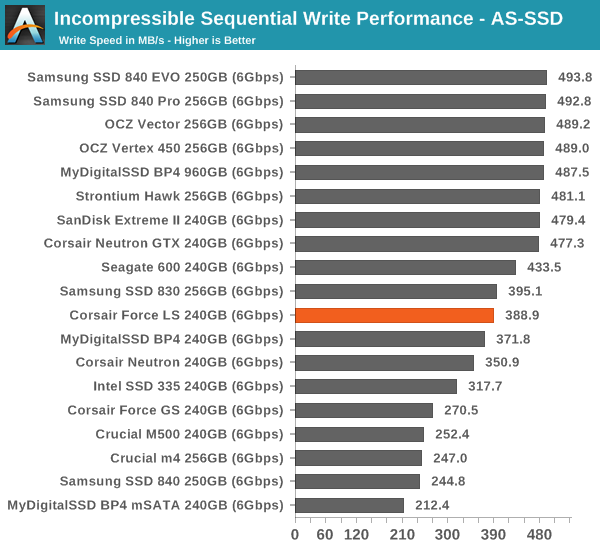










25 Comments
View All Comments
LtGoonRush - Wednesday, September 25, 2013 - link
Crucial has had a pretty poor record with firmware issues, particularly on the M4. Even given the lower endurance of TLC NAND I think it is a reasonable to expect the Samsung 840 Evo to be a more reliable drive for most users.Bob Todd - Wednesday, September 25, 2013 - link
Other than the admittedly awful SMART Power On Hours bug that was fixed a long time ago, I think you need to back up that statement. Crucial has been one of the go-to SSD makers for a lot of people specifically for the reliability (along with Intel/Samsung).1Angelreloaded - Tuesday, October 1, 2013 - link
As long as it lasts 3-5 years, Who cares? by then you should be migrating to newer ones anyways and recycle it as a cache drive.JDG1980 - Wednesday, September 25, 2013 - link
I'd be concerned about reliability with a new, unproven controller - especially when it comes from a company I've never heard of before.It sounds like Marvell controllers are inexpensive, but the cost of each company writing its own firmware drives prices up. I'd like to see a Marvell-based SSD with open-source firmware.
SteelCity1981 - Wednesday, September 25, 2013 - link
I would have liked to have seen the Samsung 840 250gb EVO in rapid mode in this benchmark to see the extra performance increase.red12355 - Wednesday, September 25, 2013 - link
Sort of unrelated, but is there ever going to be an Intel 530 SSD review? It got released a while back but hardly has any reviews.I remember there was a 520 review before the SSD was even out.
Kristian Vättö - Wednesday, September 25, 2013 - link
Intel has not approached us about the SSD 530 yet. Let me check with them to see if we can get a review sample.romrunning - Wednesday, September 25, 2013 - link
The colors on these graphs are very hard to distinguish, especially when you hit over-laying "pastel" type of colors. Is it too difficult to get colors that are easier to distinguish?Kristian Vättö - Wednesday, September 25, 2013 - link
What kind of colors would work the best in your opinion? We are always open to suggestions in order to make our content more user-friendly :)bobbozzo - Thursday, September 26, 2013 - link
RGB + CMYK might work out.Yellow on white is usually hard to see though.
Also, you'd need one more color as there are 8 drives tested.
I wonder what Tufte would say...